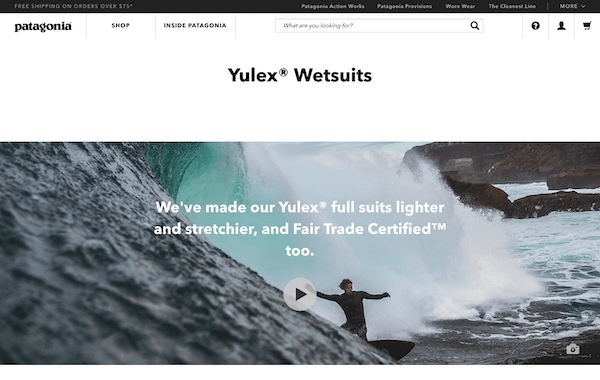Why Does Commerce Need Content?
One of the most challenging aspects of selling online is differentiation. How do you compete with the hundreds of other websites in your industry, or massive online retailers such as Amazon or eBay? It all starts with your website.
Your website is your primary, and often most powerful, conversion tool. Unlike brick-and-mortar stores, the only interaction customers will have with your brand, your service, and your product occurs on the other side of a screen. An easily navigable catalog, a straightforward checkout, and a secure payment gateway are all essential components of an ecommerce website. But they’re the baseline—they won’t differentiate you.
In order for your website to stand out, it has to tell a great story.
Modern ecommerce has become tied to storytelling. More specifically, content has become a necessary part of ecommerce. Commerce alone doesn’t accomplish what you need content to do—drive and retain traffic, and build your brand.
Without content, there’s nothing to encourage users to shop on your website rather than eBay or Amazon. Website content—copy, media, web design—is the necessary differentiator. It makes your website unique and takes into consideration the emotional side of purchasing. Content, much more so than ecommerce, establishes the brand. It’s content that has the biggest impact on how your products are displayed, how prices are gauged, and a customer’s brand loyalty.
In this post, we’ll cover the significance of content for ecommerce and how online merchants can improve their ecommerce websites to support brand story.
Combining Content and Commerce
If your content strategy is just focused on improving your website’s SEO, maintaining a blog would be enough. But if you want to improve your website as a conversion tool, content will have to be more sophisticated.
One of the most common projects we’re engaged on is website builds that combine an ecommerce platform (such as Adobe Commerce (Magento)) with a CMS platform (such as Wordpress, Drupal, or Adobe Experience Manager). Although eCommerce platforms, from simple SaaS to enterprise level websites, do offer content management capabilities, the capabilities of a CMS extend beyond them because they were designed expressly for content.
You’ll notice that many brands take a content-first approach on their websites. The homepage will feature navigation that allows users to quickly access their product pages, but the homepage itself will feature content dedicated to the brand story.
Take the Patagonia website for example:

Direct purchase navigation is placed at both the top and the bottom of this page for their Yulex wetsuit, making it easily accessible to users who want to purchase immediately, and also to those who want to educate themselves on the product. The entire length of the page features branded and informative content.
Building a Website for Content and Commerce
What’s most important is maintaining a seamless user experience. Here are some points to consider as you grow your content strategy from an ecommerce website.
1. A Seamless User Experience Is the End Goal
Directing users away from your website, even to an external blog, is counterproductive to the main goal of what content should be doing — keeping users in a place where they can convert. Separate domains can negatively affect the overall SEO and SERP of your website, and you may find your content working against you.
There isn’t a single path to a fully integrated CMS and ecommerce strategy. Ultimately, whichever approach you choose, make sure you maintain a seamless experience for your user.
2. Different Points of Access
Despite how integrated your website is, you will have to manage your website from two different administrative points if you decide to combine a CMS and ecommerce. For some businesses, this may be a deterrent. If you want a competitive, enterprise-level content strategy driving your business but you want to manage everything from one place, consider a monolithic platform:
- Oracle
- Hybris
- Sitecore
For others, having a separate website to manage content and ecommerce from may be the perfect solution.
- If separate teams are responsible for content production and ecommerce management, their access to your website is restricted to those specific tasks.
- Having separate website platforms will allow you to have increased control over managing administrator accounts, which means fewer security vulnerabilities.
- Having smaller administrative suites individualized to content and ecommerce makes overall management of the website simpler.
3. Supporting Content and Commerce
If you do choose to expand your ecommerce website with an integrated CMS, keep in mind that design and front-end development (the functional aspects of the website) will have to be continuous across both websites. Buttons will have to react similarly, web design will need to be congruous.
In modern ecommerce, a blended strategy is important and a good story sells.
